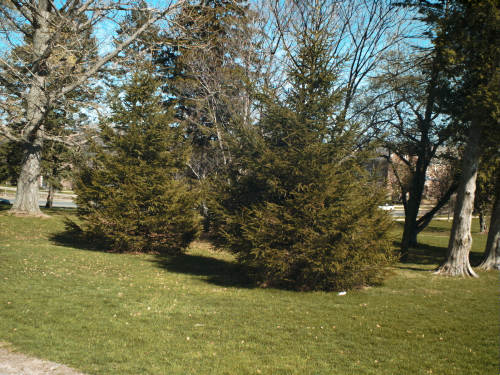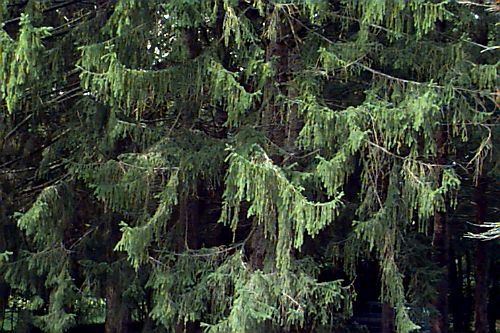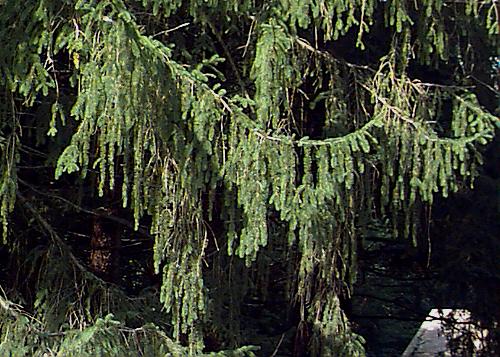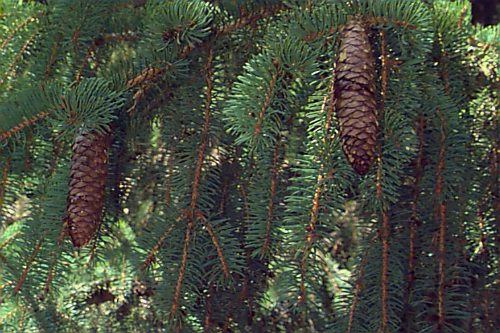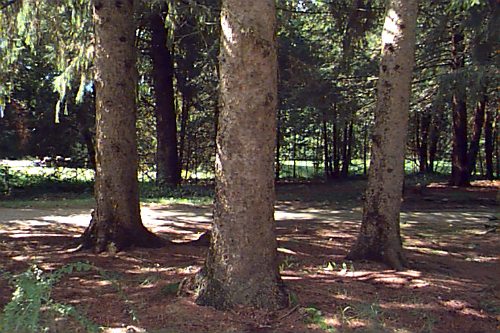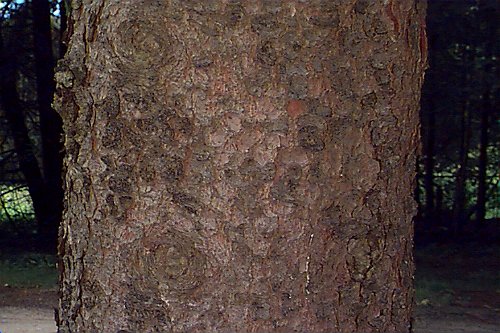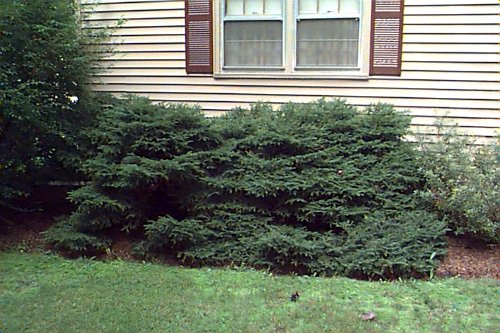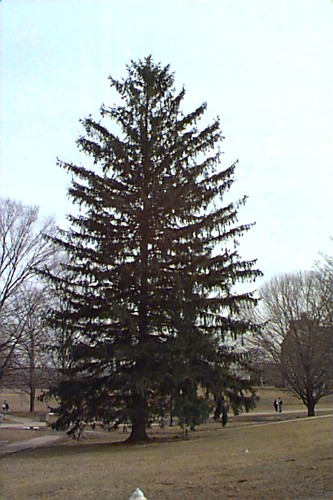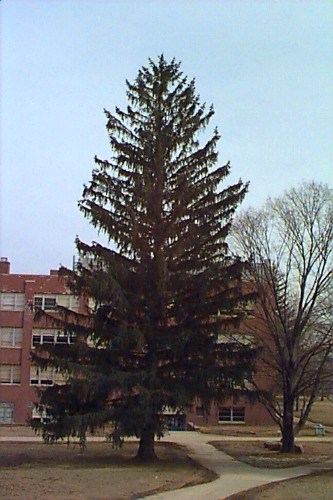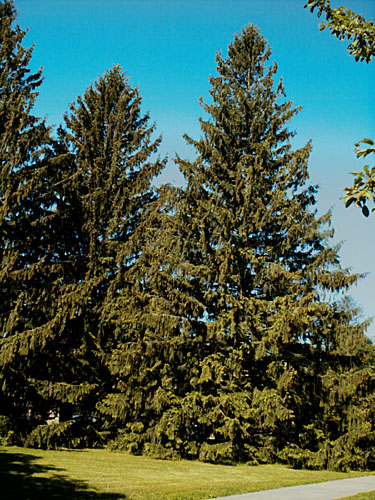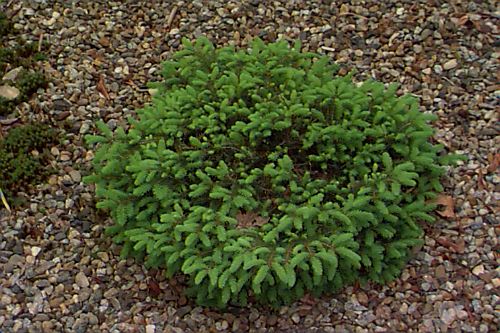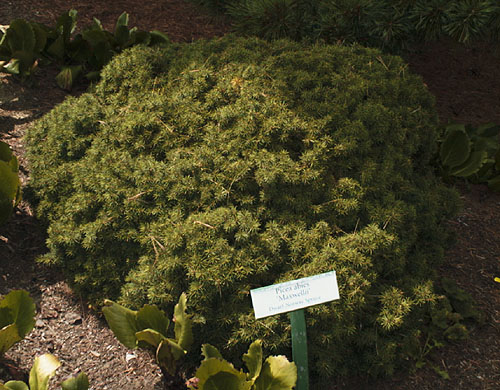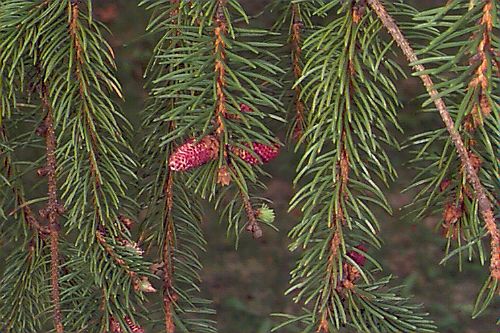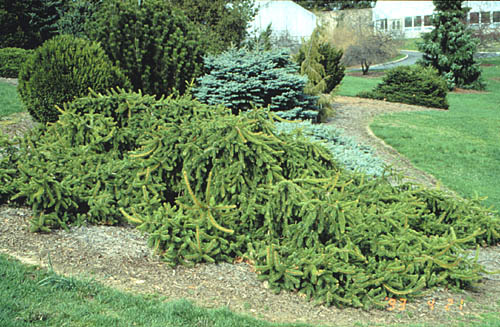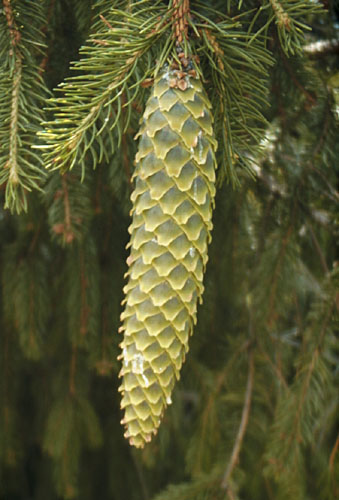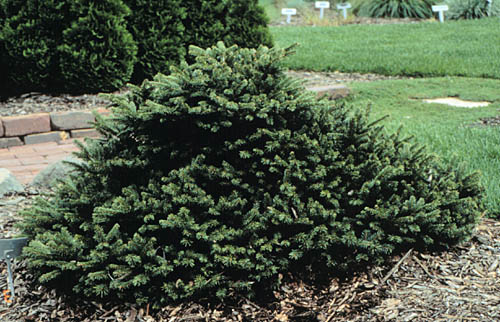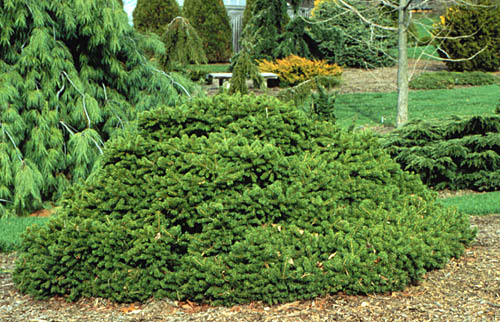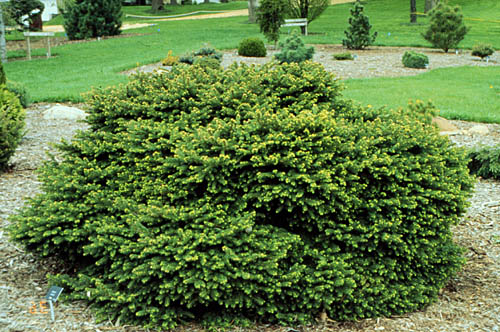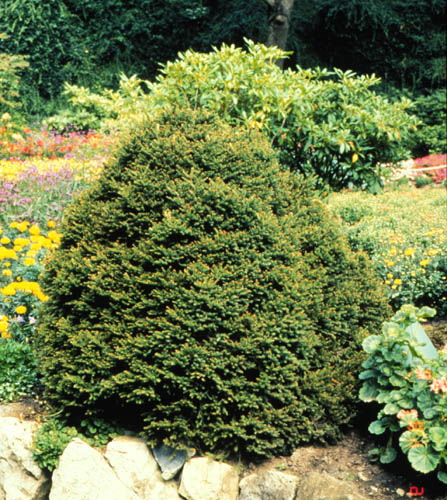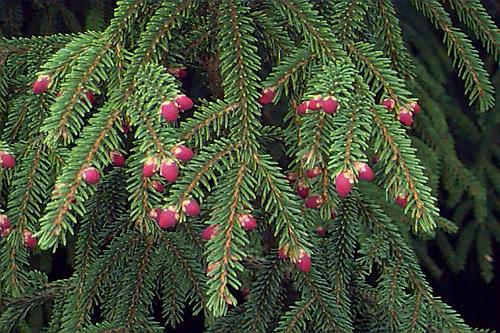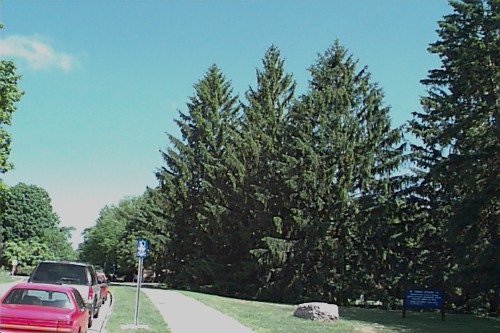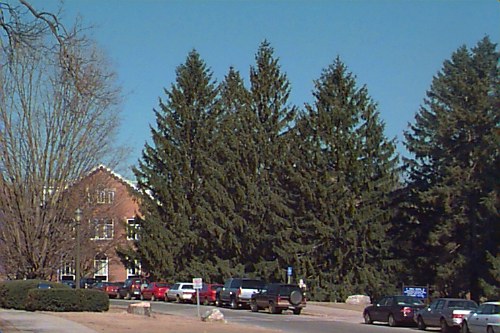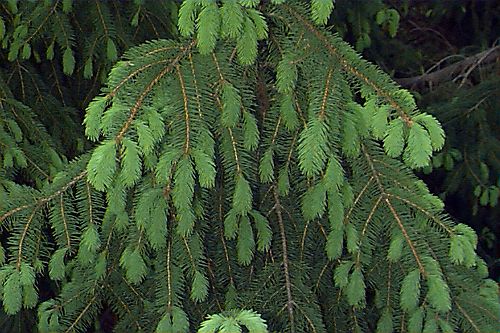Picea abies
Norway Spruce
Pinaceae
ExpandHabitat
- native to northern and central Europe
- zone 3
Habit and Form
- evergreen tree with horizontal branches and pendulous branchlets
- conical in shape
- 40' to 60' tall and 35' to 30' wide
- fast growth rate when young, slows down with age
- fairly dense when young, becoming a bit more open with age
- medium texture
Summer Foliage
- needles that persist for 3 to 4 years
- needles are stiff and pointed, 0.5" to 1" long
- needles tend to point downwards and towards the stem tip
- medium green in color
Autumn Foliage
- no fall color, evergreen
Flowers
- monoecious
- female flowers are terminal and are pink in color
Fruit
- cones found at the ends of branches
- mature cones are long and narrow; 4" to 6" long by 1.5" to 2" wide
- light green color turning to a medium brown at maturity
Bark
- gray brown color
- peeling, thin scales
Culture
- large trees transplant easily
- best in well-drained, sandy soils
- prefers acidic soils
- prefers cooler climates
- full sun
Landscape Use
- needs room to develop
- windbreak
- screen
- large shade tree when an evergreen is desired
Liabilities
- large cones can be a litter consideration
- susceptible to spruce gall adelgid, red spiders, tip weevils
ID Features
- large evergreen tree
- long narrow cones
- needles leave petiole on stem when pulled off
- stiff pointed needles
- adelgid galls
- long pendulous branchlets
Propagation
- by seed
- cultivars by grafting or some by cuttings
Cultivars/Varieties
Many cultivars are offered by specialty nurseries, but few are generally available. It is best to consult reference books and catalogs for descriptions of the more esoteric forms. Below is a representative sampling.
'Clanbrassiliana', 'Gregoryana', 'Maxwellii' - These are all globular or mounded dwarf forms. Their growth rate, ultimate size and exact shape vary somewhat, but all grow quite slowly. They are useful as specimens, foundation plants or in rock gardens.
'Nidiformis' - Commonly called "Bird's Nest Spruce", this is a very popular form in gardens and the trade. It forms a wide- spreading, low-growing plant that is rounded and shrub-like. The branches are layered with a depression in the center of the plant, hence the common name. It grows slowly to 3' to 6' tall and up to 10' wide. It is excellent used as a foundation plant. 'Repens' is similar, but bears darker foliage and a lower, more spreading habit.
f. pendula (cultivars include 'Pendula', 'Inversa', 'Reflexa', 'Repens', etc) - These are but a few of the many pendulous forms that exist with different variations of weeping growth. Often they are grafted on a standard or trained up in the nursery. They are commonly employed as specimen plants. In their finest form, they are narrow, upright plants with distinctly weeping branchlets.
'Pumila' - A globular bird's nest-type, this selection has a rounded habit with erect stems that point outwards.
'Pygmaea' - Representative of the tiny, "living rock" globular forms so popular in rock gardens, this plant is incredible dense and slow-growing. Many similar selections are offered by specialty nurseries.
